
Genesis 11:1–9 speaks of a time when all the people on the earth spoke the same language. As people moved westward, presumably from the Ark’s landing site, they came to a plain in the land of Shinar. There, they decided to build a city and a tower that would rise into the heavens. Their goal was to make a name for themselves so they wouldn’t be scattered over the face of the earth. This was a direct contradiction to God’s command to be fruitful and multiply and fill the earth.
The passage goes on to say that the Lord came down and, seeing the city and its tower, stated that these people would be unstoppable if they all had the same language. For this reason, He confused their language so that they couldn’t understand each other. This forced them to scatter across the globe – the very thing that they were trying to avoid.
The views expressed in this article reflect those of the author mentioned, and not necessarily those of New Creation.
It is possible to compare specific details in the biblical account of the Tower with historical and archaeological research. This article will analyze the historical and archaeological data related to the Tower of Babel. Its goal is to examine the historicity of the Tower, as well as the structure type, location, and timeframe. It will also address the confusion of the languages.
Was the Tower of Babel Real?
The Bible presents the Tower of Babel fiasco as a real historical event. For those who believe in the Bible as an accurate historical document, that is enough to prove that it really happened. Others, however, view the scriptures more critically. For example, Frederick suggests that the Tower of Babel is a mythological story.1 He thinks the biblical writer invented it to help explain the origins of the Hebrew people.
Did Moses Write Genesis?
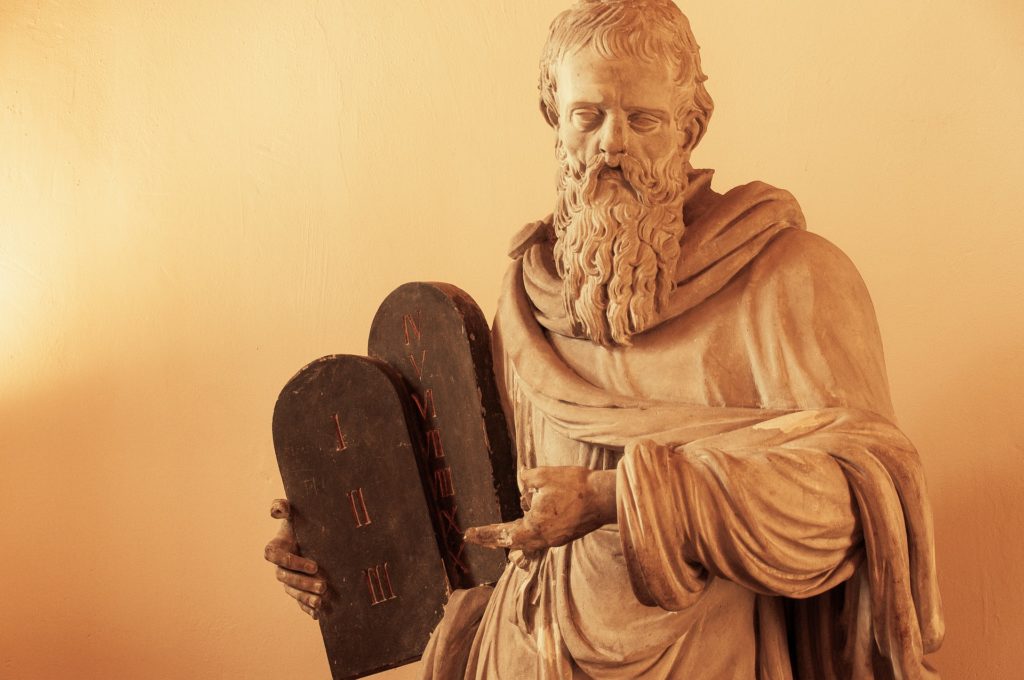
Moses is the traditional author of Genesis. Both the Old Testament (eg. 2 Chronicles 34:14) and the New Testament (eg. Mark 12:26) cite Moses as the author of the Book of the Law, which likely refers to the first five books of the Bible. He lived hundreds, and possibly over a 1,000, years after the Tower of Babel event. If Moses recorded a true account of a real event, either the story passed down from generation to generation until it reached Moses or God inspired Moses to write it without receiving any human knowledge of the event.
Did Someone Else Write Genesis?
Another school of thought places the authorship of Genesis much later, during or after the Babylonian exile in the sixth century BC. This is a popular theory among biblical scholars, but it ignores some key biblical and archaeological data. This theory widens the gap between the Tower of Babel and the writing of the book of Genesis. Thus, if the author recorded a true event, it had first passed down through many, many generations. This lessens the probability of it containing an accurate record of events. However, if the events recorded in Genesis prove to be archaeologically accurate, as I hope to prove below, this late-date authorship theory becomes even less plausible.
Making Sense of It All
Regardless of the author, it is certain that Genesis was written long after the Tower of Babel event occurred. Moses, who grew up in Egypt, would not have been familiar with Mesopotamian culture. On the other hand, if an exiled Jew wrote Genesis, he or she would have been familiar with Babylon; due to the passage of time, it is unlikely the author could produce accurate details about such an early event.
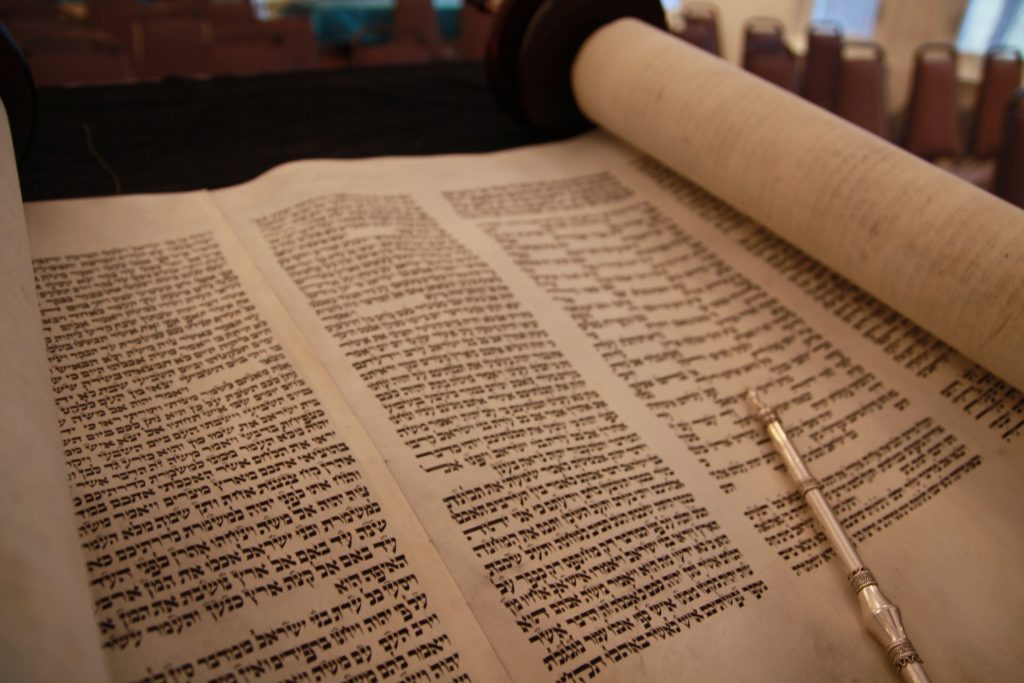
It is certainly acceptable to continue believing the truth of the Bible even in the face of criticism. However, it can also be helpful to examine the facts in order to see how the evidence lines up with the biblical text. The remainder of this article will analyze the archaeological and historical data to determine whether there is evidence that the Tower of Babel event occurred as described in Genesis 11.
What Was the Tower of Babel?
The Type of Structure
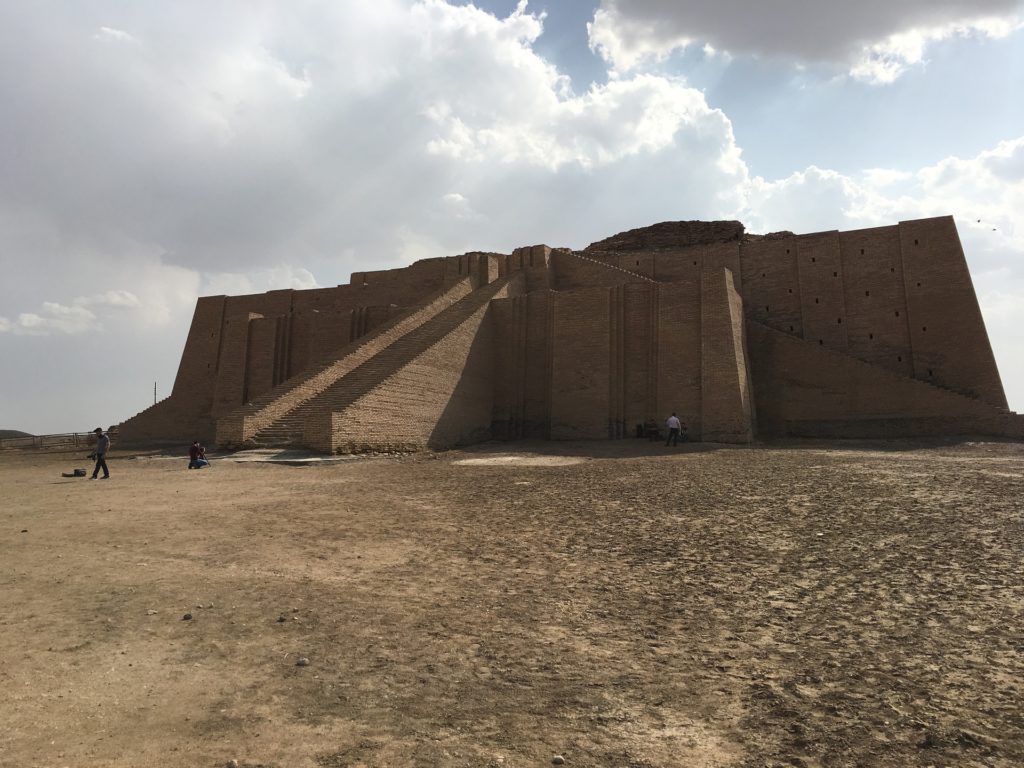
There is wide agreement among scholars that the Tower of Babel was a ziggurat.2, 3, 4, 5 Ziggurats were ancient Mesopotamian temple-towers. They were constructed in a stair-step fashion, with each tier smaller than the one below it. At the top lay a small shrine dedicated to a particular deity. The earliest known ziggurats date to around 3200 BC.6
Linguistic studies have demonstrated that the purpose of ziggurats was to create a link between earth and heaven. The names of some known ziggurats illustrate this concept. A ziggurat at Larsa had the name “The House of the Link between Heaven and Earth,” while one at Borsippa bore the title “The House of the Seven Guides of Heaven and Earth.” The title of another ziggurat in Babylon was “The House of the Foundation-Platform of Heaven and Earth,” and the one at Sippar was called “The Temple of the Stairway to Pure Heaven.”7, 8
The Building Materials
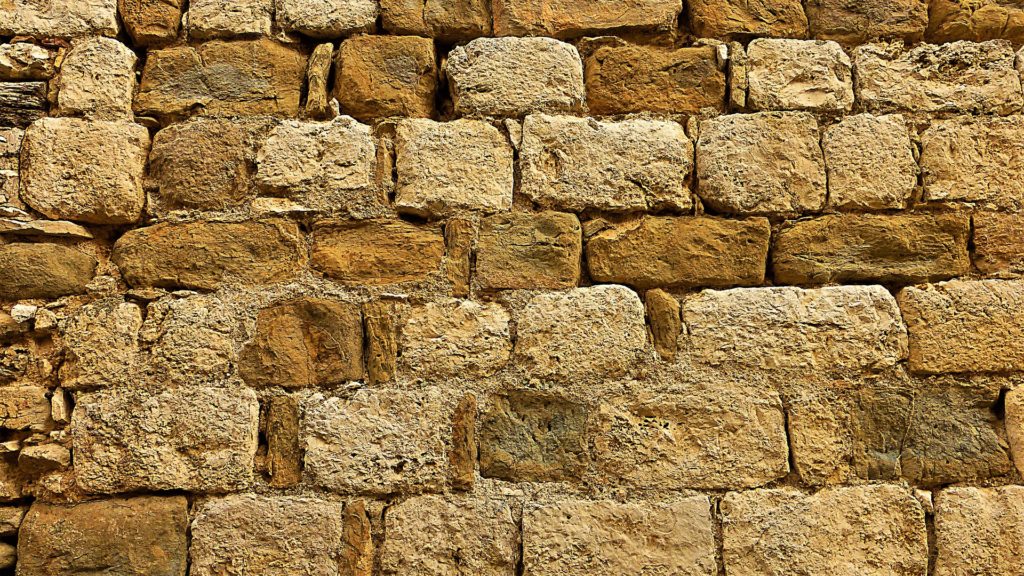
Genesis 11:3 specifies that the Tower of Babel’s construction consisted of baked brick and mortar. With their first known use dating to the late Uruk period, baked bricks were the prime building material for the construction of ziggurats. Bitumen, a sticky, black, petroleum-based substance, was the mortar of choice.9 Not all ancient cultures used baked bricks. For example, the Egyptians constructed the pyramids of sun-dried bricks.
Where Was the Tower of Babel?
According to Genesis 11:2, the Tower of Babel lay in the plain of Shinar. Many scholars conclude that Shumer is the Akkadian equivalent of the Hebrew word Shinar.10 Therefore, they equate Shinar with the region of Shumer in southern Mesopotamia. Even those who do not equate Shumar with Shinar generally place the location of the Tower in that region.11
Was it in Babylon?
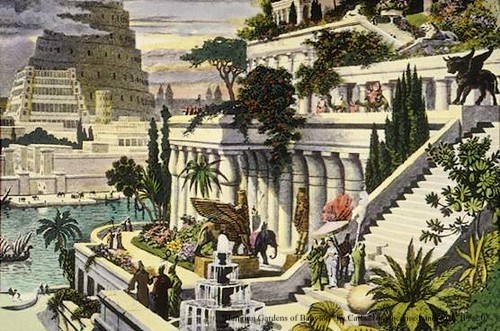
Scholars have traditionally equated Babel with Babylon, an ancient Mesopotamian city that lies on the Euphrates river.12,13 Some early researchers, looking for ancient towers in the area of Babylon, believed the site of Birs Numrud was the Tower of Babel. A later view suggested instead that an ancient structure known as E-temen-an-ki was the Tower of Babel.14
Candidate Sites in Babylon
E-temen-an-ki was an impressive 7-story tower, and became one of the wonders of the ancient world. However, this tower, which dates to the 7th century BC at the earliest, is not nearly old enough to be the Tower of Babel.15

According to an inscription found at Birs Numrud, Nebuchadnezzar, a king of Babylon in the 6th century BC, extensively renovated and restored the ancient tower.16 He made it into a shining, multi-layered tower and used gold, silver, and precious stones in the construction. Nebuchadnezzar recorded the tower was ancient when he restored it, but he left no record of how old it was at that time.17 The extensive renovation appears to have destroyed the earlier remains necessary to determine the age of the original structure.
There is some debate among scholars as to whether Nebuchadnezzar restored Birs Numrud or E-temen-an-ki.18, 19 It is possible that he restored both.
Regardless of the actual age of these towers and whether either one qualifies as a candidate for the Tower of Babel, it appears that Nebuchadnezzar believed that he had restored and completed the actual Tower of Babel. He boasted, “I made it the wonder of the people of the world, I raised its top to the heaven.”20
Difficulties Dating the Babylon Towers
Although scholars have considered both of these towers as candidates for the Tower of Babel, it is difficult to determine whether either one is old enough to qualify. In fact, there is some question regarding the age of Babylon itself. Since the water table of the Euphrates River shifted over time, it obliterated early archaeological remains.21
Was it Somewhere Else?
Recently, several scholars have questioned the traditional location of Babylon as Babel. Habermehl22 suggests that Babel lay in the Khabur triangle in northern eastern Syria, but she does not suggest a candidate site.
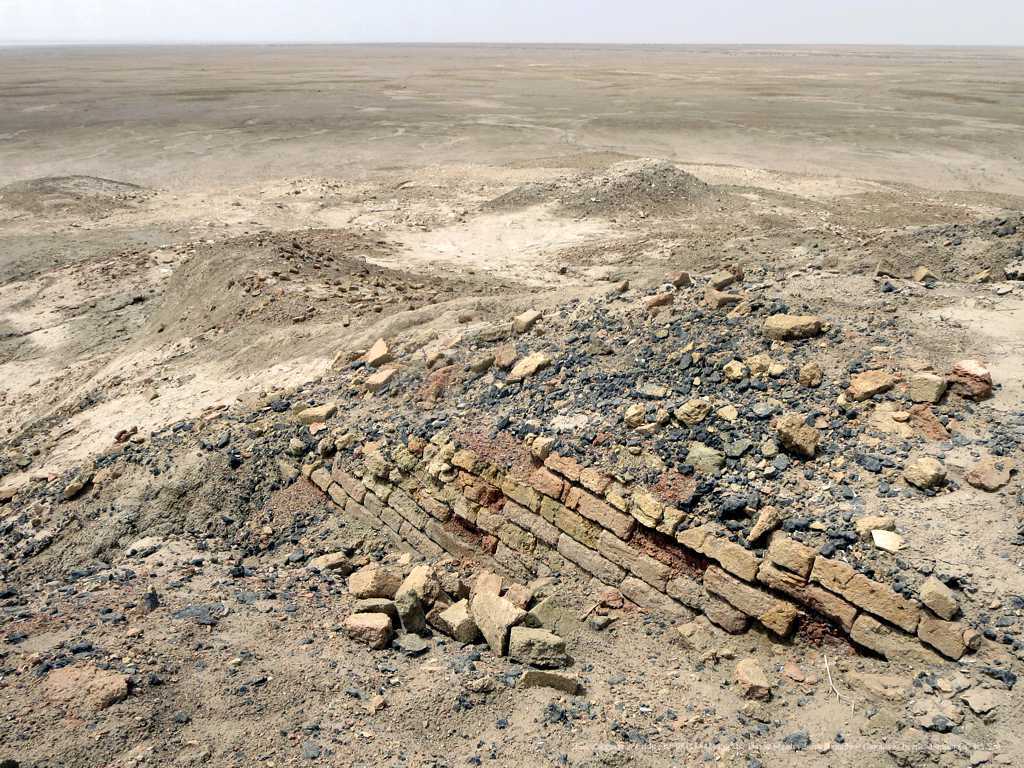
Conversely, Petrovich suggests that Eridu, the oldest known city in the world, was the site of the Tower.23 He notes that the name Babylon belonged to various cities throughout this history of Mesopotamia. Eridu was one of these cities.
Petrovich searched the archaeological record for evidence of a dispersion of people from the region of Shumer. He discovered that there was a movement of people away from Eridu during the Late Uruk III period.
During this time the people of Eridu constructed a giant raised platform, presumably intended as the base for a large temple-tower. For unknown reasons, they abandoned the construction project, which coincided with a dispersion of people in various directions. Some built new communities, while others moved into existing settlements, sometimes slaughtering the existing residents. The Uruk expansion was a violent movement of people groups, suggesting a lack of harmony among them. This makes sense if they could no longer communicate with each other.
When Was the Dispersion from Babel?
Where Does It Fit in Biblical History?
Genesis 10:25 notes that the earth was divided in the days of Peleg. The majority of creationists believe that this refers to the division of people at the Tower of Babel.24 Since Genesis 11:10–27 provides a genealogy including ages, it should be easy to calculate the amount of time between the Flood and the Tower of Babel.
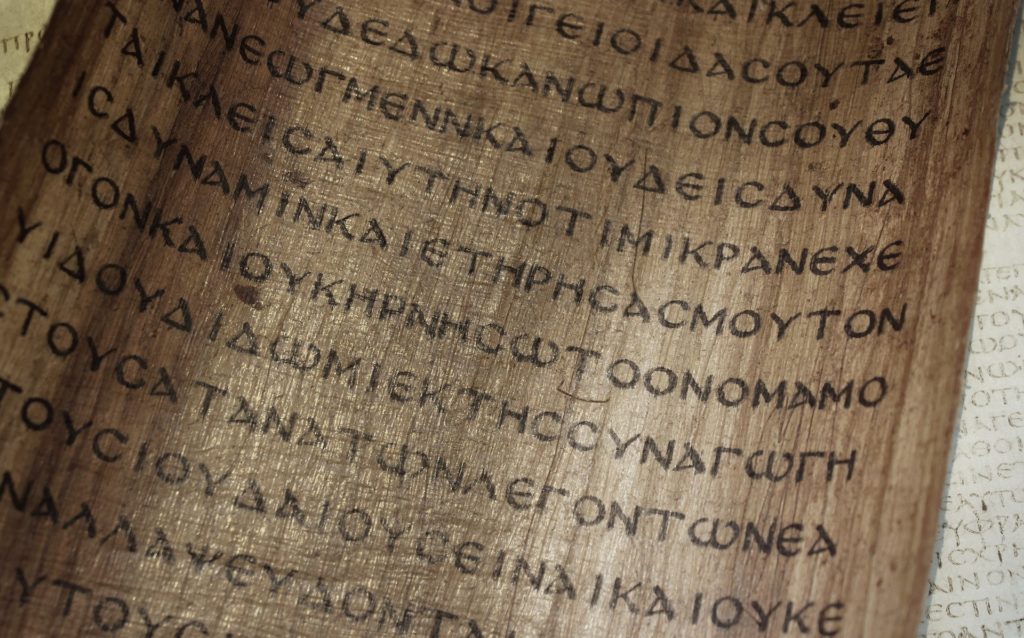
However, a complication arises in the fact that the Masoretic text and the Septuagint, the two main ancient biblical texts, contain conflicting numbers. Adding up the figures in the Masoretic text provides a total of 101 years between the Flood and the Tower of Babel event, assuming it occurred close to Peleg’s birth. The same timespan in the Septuagint adds up to 531 years. For more on these chronologies, see this article.
Where Does It Fit in World History?
Another point of consideration is how the Tower of Babel fits into world history. Many biblical scholars assume that Noah’s descendents remained as a unified group until the Tower of Babel event. This event forced them to adopt a ‘Stone Age’ lifestyle as they spread out across the earth. If this is the case, the Tower of Babel would pre-date almost all settlements and civilizations worldwide.
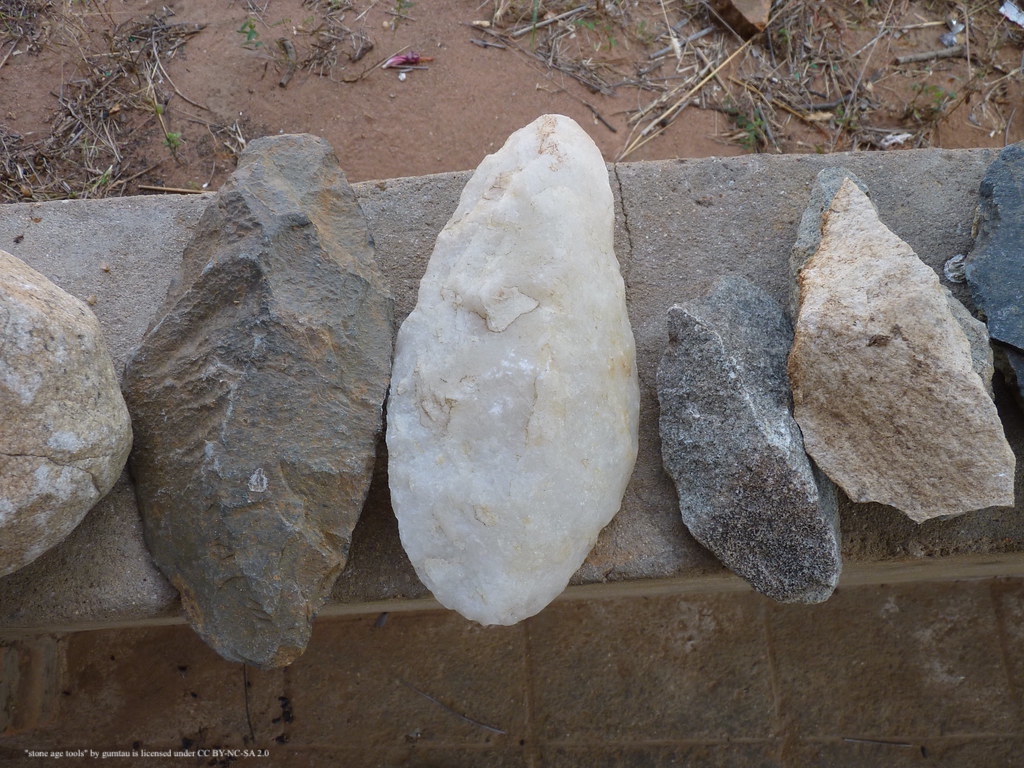
However, some scholars have suggested that the Tower of Babel event did not include all of Noah’s descendents. The Bible does not specify that the people remained in one group until that point, only that they had one language (Genesis 10:32–11:2).
Walton examined the technology required for the Tower of Babel.25 He suggested that four key components were necessary. These include baked bricks, ziggurats, urbanization, and central government. Walton suggested that while these four criteria were necessary, the Tower of Babel could have existed before these technologies successfully emerged. This is because the confusion of the languages created an effective set-back in technological advancement. The technologies would have successfully re-emerged at a later date. Walton concluded that the Tower of Babel event occurred in the Ubaid period or perhaps the Uruk period.
Petrovich believes that the Tower of Babel involved only a portion of the earth’s population and occured after the development of ‘Stone Age’ technology.26 As noted above, he dated the event to the Late Uruk III period. At this point in history, humanity was in the process of redeveloping technology lost at the time of the Flood. They transitioned from hunter-gatherer lifestyle to a more agricultural lifestyle, and finally urbanized living. This time period meshes well with the Septuagint date for the Tower of Babel.
What About the Confusion of the Languages?

Linguistic studies can shed light on the Tower of Babel event. Interestingly, it appears that languages have not evolved from one single root language. Rather, multiple languages seemed to have appeared, fully developed, very early in history.27 This lack of language development is unexplainable without a supernatural event such as the Tower of Babel.
Was Sumerian the First Language?
Additionally, research suggests that the Sumerian people were the first major people group to settle in southern Mesopotamia. Oddly, the Sumerian language included some words, particularly in regards to agriculture, that seem to come from a different language. Typically, this occurs when one group of people conquers another and takes over an area. Yet, in this case, there is no evidence of a cultural shift.28
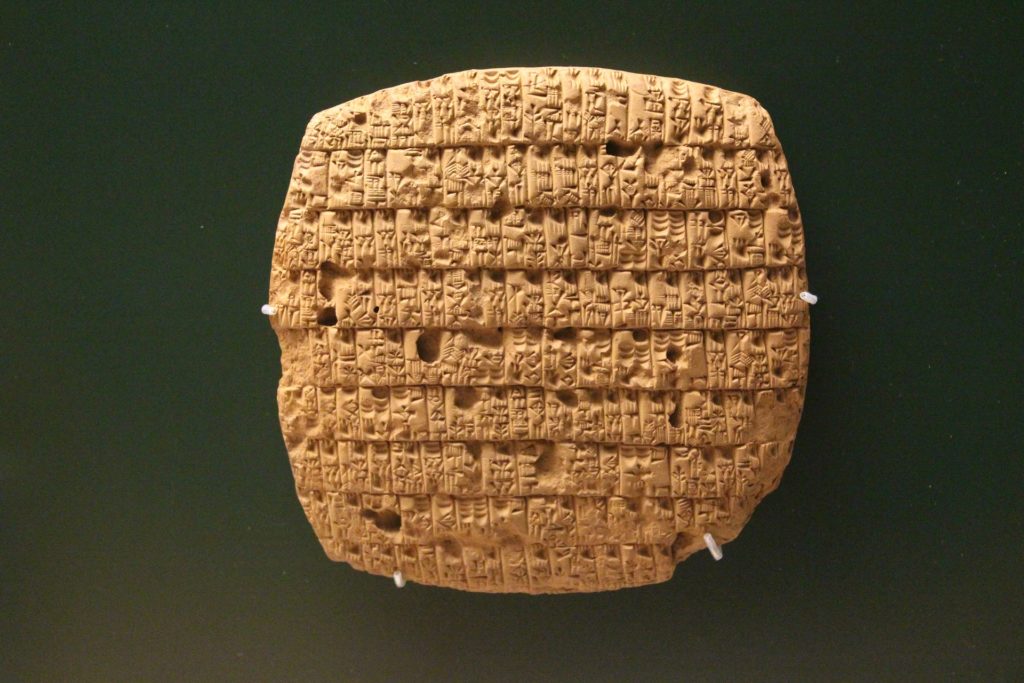
Aling suggests that this is evidence of the confusion of the languages at the Tower of Babel.29 After God confused the languages, the people who remained in southern Mesopotamia spoke a different language than before. However, certain words, such as those used in place names, may have survived from the original language. This would explain why the Sumerian language has some words which seem to have been carried over from a prior language even though there is no evidence that people of a different culture lived there before them.
A Sumerian Legend
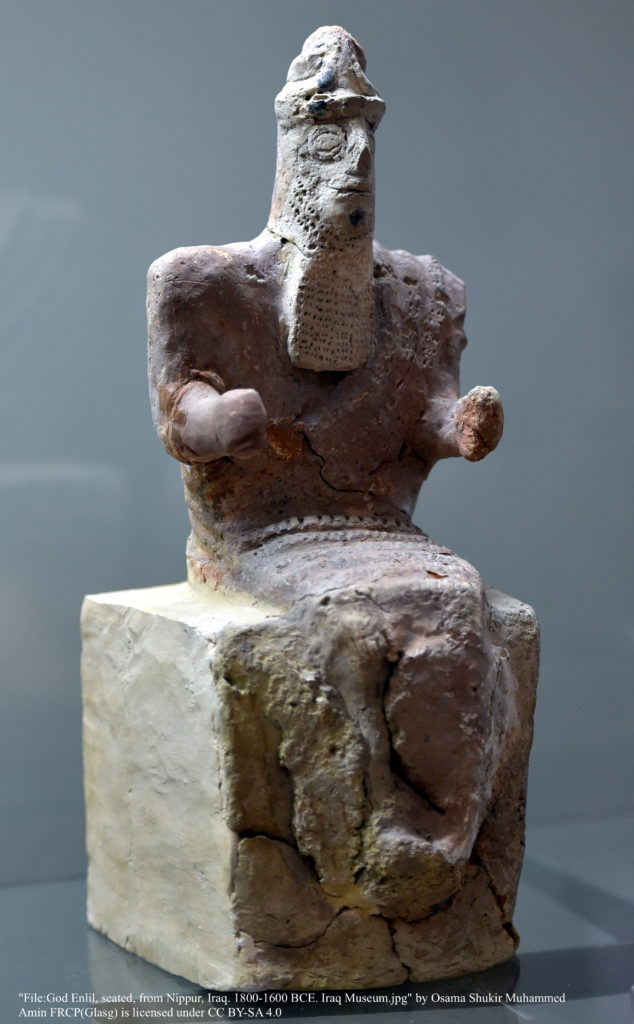
There is an ancient Sumerian legend known as Enmerkar and the Lord of Aratta. It tells of a king of Uruk who attempted to build a ziggurat temple in Eridu. He describes the structure as “a temple brought down from heaven.” The story goes on to describe how the god Enlil changed the speech of the people from many languages to one language in order to unify them in worship.30
This story bears a marked resemblance to Genesis 11:1–9, but the details are reversed. Whereas the Tower of Babel was intended to reach up to heaven, the tower in the legend came down from heaven. In Genesis, God changed the languages from one to many, while in the story, Enlil changed the languages from many to one. Despite these differences, the story of Enmerkar demonstrates that the Sumerian people retained a memory, albeit convoluted, of the Tower of Babel event.
Summary
So, what does the evidence suggest? How do the archaeological findings line up with the biblical account of the Tower of Babel? Did the author of Genesis record actual history? Or, as the critics suggest, is it a fabricated account?
The Construction of the Tower
The nature of the Tower of Babel matches well with ancient Mesopotamian ziggurats, religious towers intended to reach to heaven. The building materials mentioned in Genesis 11:3 are consistent with those used in the construction of ziggurats. It is highly unlikely that Moses or an even later author would have been familiar enough with this type of construction to fabricate such a story. Therefore, these details suggest that the account in Genesis 11 describes a real tower from early Mesopotamian history.
The Location of the Tower
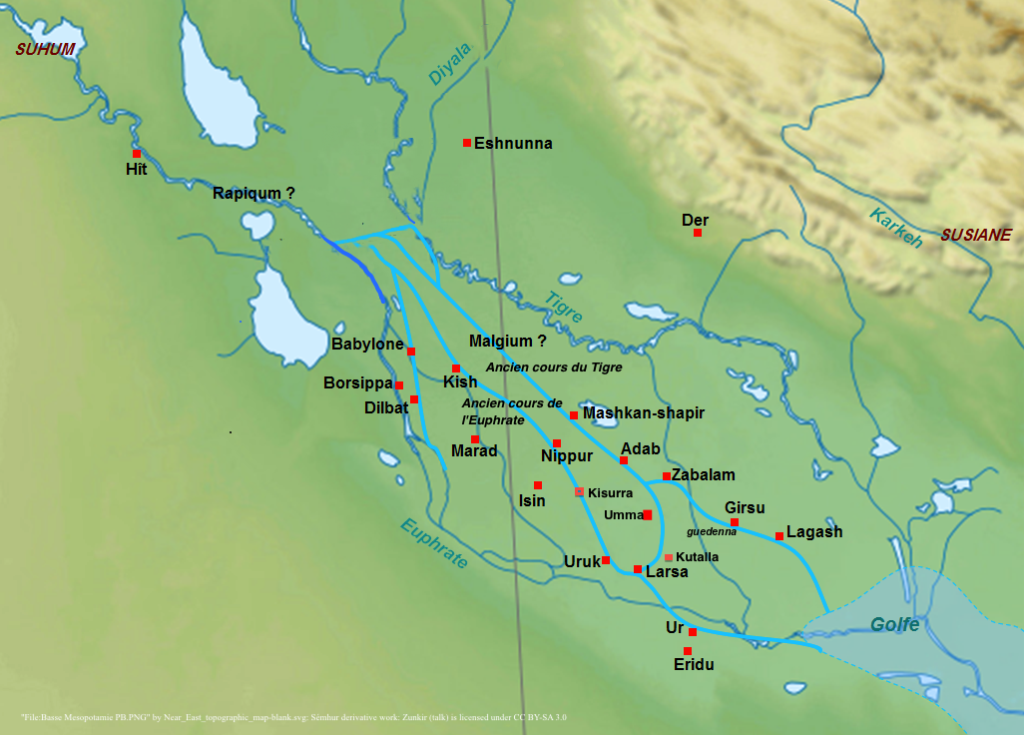
Although scholars have suggested various candidate sites for the Tower of Babel, conclusive evidence seems to be lacking for any of the possible sites in the Babylon area. However, the location of the Tower, as described in Genesis, finds a close parallel in the archaeology of Eridu, the world’s oldest city. Even without conclusive evidence, the similarities between the biblical account and ancient Mesopotamian history and myths strongly suggest that the Tower of Babel account originated in ancient Mesopotamia.
The Timeframe of the Event
There is some disagreement among scholars regarding the timeframe of the Tower of Babel event. However, whether it occurred shortly after the Flood or later after many people groups had already dispersed, it seems clear that the technology necessary for the construction of the tower existed early in Mesopotamian history.
The Confusion of the Languages
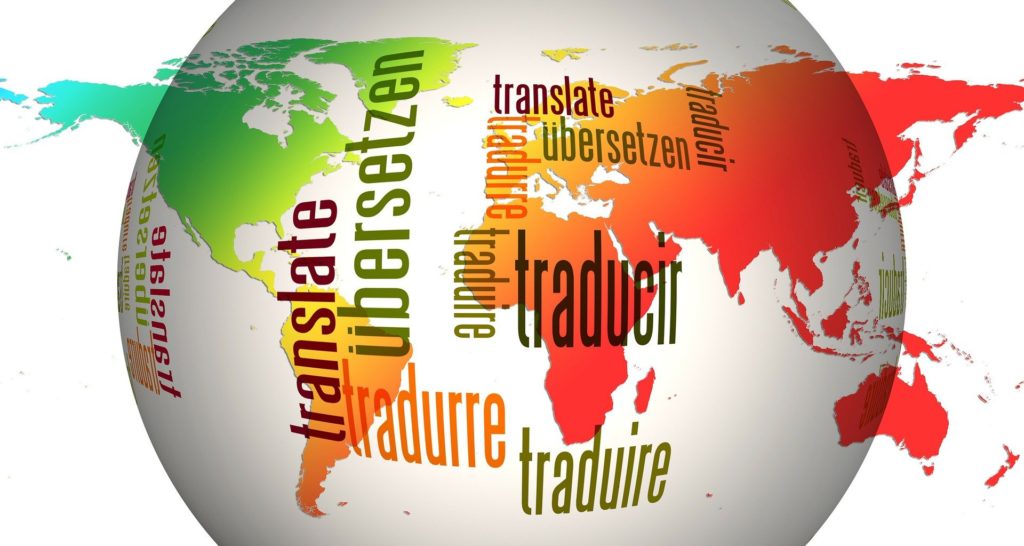
Linguistic studies suggest that multiple fully-developed languages appeared early in human history. Furthermore, ancient Sumerian mythology suggests a memory of an event in which a deity changed the languages of the people. Although the details are different from the biblical account, it seems likely that these myths refer to the same event. Thus, linguistics and mythology both point to the historical reality of the Tower of Babel event.
Conclusion
The synchronisms between the biblical account of the Tower of Babel and ancient Mesopotamian archaeology are striking. When compared to archaeological findings from ancient Mesopotamia, the specific details in the biblical account point to its historic reliability. Studies regarding the Tower of Babel are ongoing. Further research and archaeological digs may reveal new data. Until then, even without conclusive evidence regarding the location and timeframe of the Tower of Babel, it seems clear that the narrative is firmly tied to ancient Mesopotamia, just as the Bible states. This suggests that the author of Genesis had a very good understanding of these events and recorded them accurately. It seems very likely that Moses was the author of Genesis since he spoke with God (Numbers 12:6–8) and could have received the details directly from Him. It seems impossible that any author could have fabricated such precise and accurate details hundreds or thousands of years after the event.
Footnotes:
- Frederick, Randall S. “On the Tower of Babel (Genesis 11:1–9)” Academia.edu ↩︎
- Garrett, Duane A., ed. Archaeological Study Bible. (Grand Rapids: Zondervan, 2010), 20. ↩︎
- Walton, John H. (2008). “Is there Archaeological Evidence for the Tower of Babel?”, Associates for Biblical Research Website. ↩︎
- Taylor, John. “The ‘Five Books.’” In Eerdman’s Handbook to the Bible, edited by David Alexander and Pat Alexander. (Carmel: Guideposts, 1973), 135. ↩︎
- Price, Randall. Zondervan Handbook of Biblical Archaeology. (Grand Rapids: Zondervan. 2017), 70-71. ↩︎
- Walton, 2008. (Footnote 3) ↩︎
- Garrett, 2010, 20. (Footnote 2) ↩︎
- Baizerman, Michael. “The Tower of Babel (Gen.11:1–9): An Attempt of the Biblical Interpretation.” Dawn and Sunset: A Tale of the Oldest Cities in the Near East. 2015. ↩︎
- Walton, 2008. (Footnote 3) ↩︎
- Jastrow, Morris (1915). The Civilization of Babylonia and Assyria: Its Remains, Language, History, Religion, Commerce, Law, Art, and Literature. Philadelphia and London: J. B. Lippincott Company. ↩︎
- Zadok, Ran (1984). “The Origin of the Name Shinar.” Zeitschrift für Assyriologie 74: 240–244. ↩︎
- Ross, Allan P. (1981) “The Dispersion of the Nations in Genesis11:1–9.” Bibliotheca Sacra 138: 119–138. ↩︎
- Price, (2017), 70. (See Footnote 5) ↩︎
- Kraeling, E. G. H. (1920) “The Tower of Babel.” Journal of the American Oriental Society 40: 276–281. ↩︎
- Ross, (1981), 123. (Footnote 12). ↩︎
- Rawlinson, Henry C. (1861) “On the Birs Nimrud, Or the Great Temple of Borsippa.” Journal of the Royal Asiatic Society 18: 1–34. ↩︎
- Peters, John P. (1921) “The Tower of Babel at Borsippa.” Journal of the American Oriental Society 41: 157–159. ↩︎
- Peters, (1921), 158. (Footnote 17) ↩︎
- Price, (2017), 72. (See Footnote 5) ↩︎
- Price, (2017), 72. (See Footnote 5) ↩︎
- Walton, John H. “The Mesopotamian Background of the Tower of Babel Account and Its Implications.” Bulletin for Biblical Research 5: 155–175. 1995. ↩︎
- Habermehl, Anne (2011). “Where in the World is the Tower of Babel?” Answers Research Journal 4: 25–53 ↩︎
- Personal communication between author and Dr. Petrovich. ↩︎
- Habermehl, (2011). (Footnote 22) ↩︎
- Walton, 2008. (Footnote 3) ↩︎
- Personal communication between author and Dr. Petrovich. ↩︎
- Curtis, William M. (1990) “Human Language Demands a Creator.” The Proceedings of the International Conference on Creationism 2. ↩︎
- Aling, Charles. (2004) “Cultural Change and the Confusion of Language in Ancient Sumer.” Bible and Spade 17: 1–7. ↩︎
- Aling, 2004. (Footnote 28) ↩︎
- Kennedy, Titus. Unearthing the Bible: 101 Archaeological Discoveries that Bring the Bible to Life. (Eugene: Harvest House Publishers. 2020.), 22-23. ↩︎

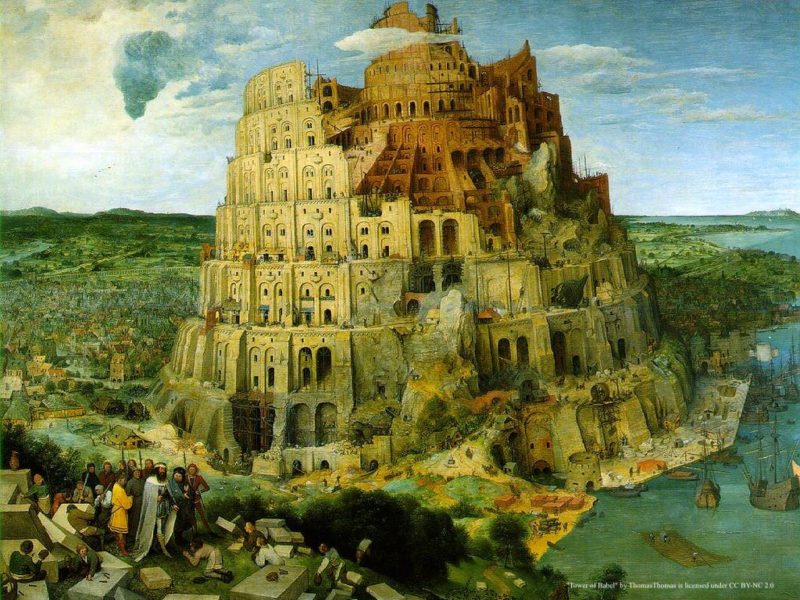
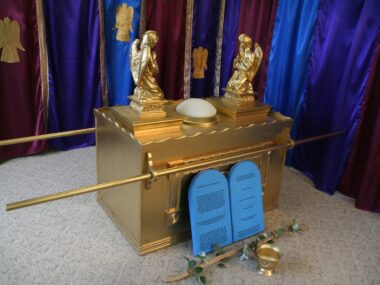









What about the historical account of a man named Nimrod?
Hi Craig,
That is a great question, and I would need to write another article to properly answer your question. Genesis is unclear as to whether Nimrod is connected with the Tower of Babel, but it is a possibility.Here is a link to an article suggesting that Nimrod may be Sargon of Akkad: https://www.academia.edu/2184113/_2013_Identifying_Nimrod_of_Genesis_10_with_Sargon_of_Akkad_by_Exegetical_and_Archaeological_Means
We know for sure that Moses wrote the Pentateuch because there are several references to him being the author throughout scripture. Jesus even refers to the Pentateuch as the Book of Moses in Mark 12:26.
Hi Brittney,
You are right, anyone who takes the Bible at face value (myself included) can see clear evidence for Moses’ authorship of the Pentateuch. Unfortunately, there is a prominent idea among Bible scholars that the Pentateuch was not written until much later. The reason that I brought up this possibility in my article was not to give credence to the idea, but rather to emphasize the fact that the author (whether Moses or anyone later) did not have first-hand knowledge of the Tower of Babel. I will review the article and, if necessary, edit it to clarify this topic. I appreciate you bringing it to my attention.
When I found something that seemed to contradict the bible I would do a little research and sometimes struggle for years over something like the flood story… Then someone puts it in a new light and you can see it line up. Another one is the levirate marriage in the NT that fixed a contradiction of names… Often times there’s some archaeological evidence. At the end of many lessons, you take things on faith that the answer will come… Not blind faith, but experienced faith…
Hi Michael,
That is so true. Thank you for sharing. There have been many instances in which skeptical scholars were convinced that a certain portion of the Bible were incorrect. Their view held sway until decades later, when an archaeological discovery came to light which proved that the Bible had it right all along. For example, the very existence of King David was strongly doubted until the “House of David” inscription came to light.
Dear Abby: Sorry you didn’t mention that the other 2 peoples with literacy in deep antiquity, the Chinese and the Mayans, also have records of an original language being diversified by celestial power. …Also strange how you got to Shumer without equating it to Sumer. Sumerian is an isolate language. They also had a newly spun-off language from Edenic, but they stayed in Shinar…. Peleg was not about the breakup of languages, but about the breakup of Pangea, the 1 יבשת YaBeSHeT, into our present continents. A walk from Shinar to southern Chile was once easy. … Any kid can see that East Brazil fits into West Africa… but many acadummies can’t. The meaning of one S. American language is “pleasant speech.” This infers that all other languages were awful terrors at some distant time. If I can send you only one of our E-Books it could be “Old Words in the New World: Discovering over 6,000 Biblical Hebrew roots in the Native Languages of the Americas.” (friend of David Rubin, ex-mayor of Shiloh)
Many believe that the tower utilized technology from before the flood and was made out of materials that we have not yet created. This tower could have been miles high. Nimrod is said to have been developing a weapon similar to the Cern project in this present day. Also that he is the only human to convert himself to the Nephilum level. That is why they cut him up into over 60 pieces and distributed these pieces over the known world. Essentially; they wanted to kill God by having this weapon shoot interdimensional to reach Him. God’s angels led over 70 groups of languages to different locations on the globe. None of this dispersion was accidental or random. Sounds crazy, maybe not!
Dear Fred,
Did you find any Jewish traditon în this sense?
Thank you,
Liviu